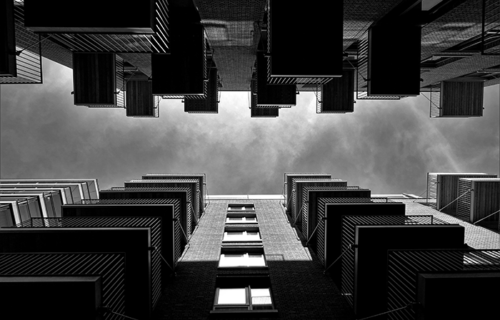As of 2021, there were 200,000 unoccupied flats in apartment buildings in the Czech Republic. Since 2011, their number has increased by 40 percent. This is according to a study by the Ministry of Regional Development (MMR). It worked with data from the Census of Population, Flats and Houses for 2021 collected by the Czech Statistical Office. According to the study, these may in part be investment flats used for purposes other than housing or offered for short-term accommodation. However, other reasons include the poor technical condition of the properties.
“The number of long-term unoccupied flats in apartment buildings has essentially equaled new construction over the past decade. This significantly exacerbates the housing crisis, because the 200,000 housing units are then simply missing from the market. For me, this is further proof that construction alone will not increase the availability of housing,” said Deputy Prime Minister and Regional Development Minister Ivan Bartoš (Piráti).
According to the latest Census of Houses and Flats, there are 860,000 unoccupied flats in the Czech Republic. Their number has doubled in the last 30 years. About 70 percent of these flats are located in family houses. According to the expert estimate of the Ministry of Regional Development, there are actually about 577,000 long-term unoccupied flats, of which 200,000 are in apartment buildings and 377,000 in family flats. The remaining 273,000 flats are so-called temporarily unoccupied and may be used for occasional accommodation or recreation.
The total housing stock has grown by about a third since 1991. Unoccupied flats in apartment buildings account for approximately one third of all Czech unoccupied flats. An exception is Prague and the Karlovy Vary Region, where flats in apartment buildings make up the majority of all usually vacant properties. In Prague, there are almost 75,000 flats located in a block of flats with no one declaring their usual residence. This represents almost 80 percent of all unoccupied flats and almost 13 percent of the total housing stock in the metropolis.
In the Karlovy Vary Region, the regional city itself is a significant contributor to the unoccupied housing stock, with a significantly higher proportion of the total stock than in other parts of the country. According to the study, the reason for this is the higher tourist potential of the region, but also foreign investment, especially by Russian-speaking owners, and its decline due to economic and geopolitical changes in recent years.
According to the study, the age of the building in which the apartment is located is often the reason for the unoccupied status of the apartment, both in terms of current condition and housing costs. However, one fifth of empty flats are located in apartment buildings that were built or renovated after 2001. According to the study, this points to a certain proportion of investment flats.
An above-average number of unoccupied dwellings are located in houses owned by one individual and then by a legal entity. In contrast, flats in houses owned by housing associations or municipalities or the state are less unoccupied than the overall average.
Source: MMR and CTK
